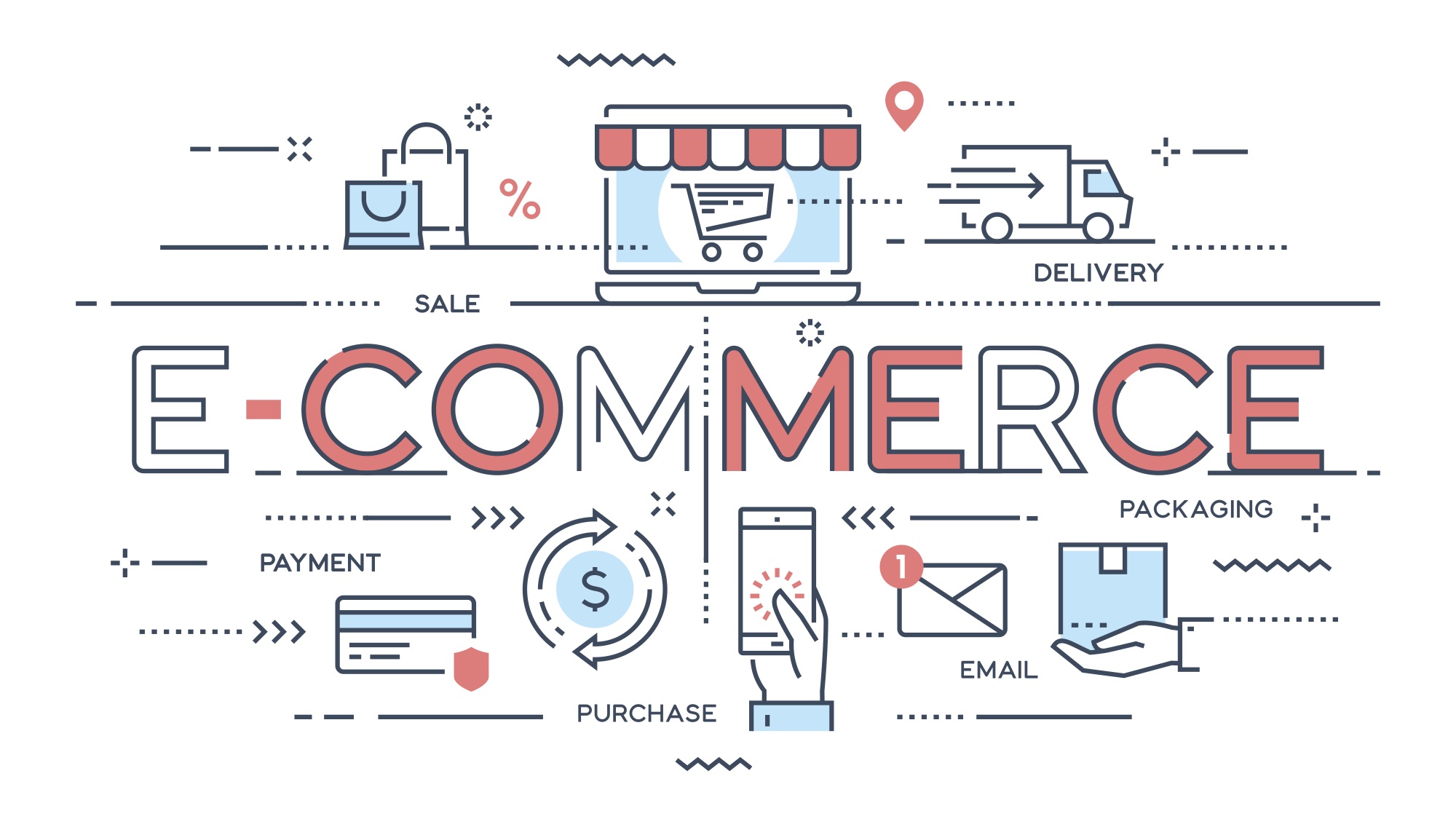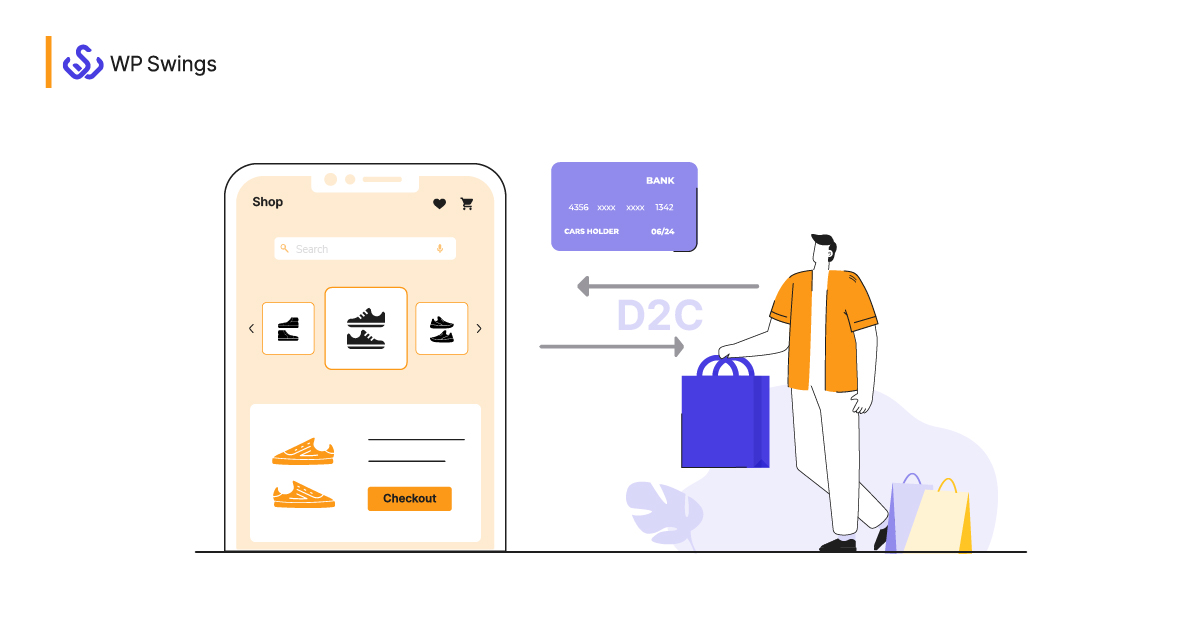Exploring the Prospective of D2C Ecommerce: A Comprehensive Guide for Companies
The D2C ecommerce design offers a substantial change in just how brand names involve with consumers. It allows business to bypass standard retail networks, fostering deeper links and possibly raised profit margins. Nevertheless, this strategy is not without its complexities. Comprehending the nuances of D2C ecommerce is important for brands aiming to flourish. What techniques can they take on to navigate this evolving landscape properly? The answers might redefine their company strategies.
Comprehending the D2C Ecommerce Design

Secret Perks of D2C Ecommerce for Brands
The D2C ecommerce design provides brands considerable benefits, especially pertaining to raised earnings margins. By removing middlemans, business can maintain a bigger share of sales revenue. Furthermore, this direct connection with consumers fosters boosted brand loyalty, motivating repeat purchases and long-lasting interaction.
Enhanced Revenue Margins

Improved Brand Name Commitment
Structure on the economic benefits of D2C ecommerce, boosted brand loyalty arises as one more vital benefit for companies involving directly with consumers. By establishing a straight connection, brand names can promote deeper connections with their customers, obtaining understandings right into preferences and actions. This direct communication enables for more individualized marketing strategies, which reverberate highly with customers. In addition, brands have the opportunity to control their messaging and customer experience, enhancing brand values and constructing count on. When clients really feel an individual link, they are a lot more likely to return, promote for the brand name, and join neighborhood engagement. Ultimately, enhanced brand commitment not only drives repeat acquisitions but likewise cultivates an enthusiastic client base, additional strengthening a brand name's placement on the market.
Obstacles Faced by D2C Brands
D2C brand names run into a number of significant obstacles that can impact their success. Inventory management problems can result in equip lacks or excess, complicating procedures and consumer satisfaction. Additionally, advertising and marketing budget plan constraints frequently limit the ability to properly reach and engage target market.
Inventory Monitoring Issues
Reliable supply management offers a powerful difficulty for lots of brands running in the direct-to-consumer (D2C) room. These brand names frequently come to grips with rising and fall need, which can result in overstock or stockouts, ultimately influencing consumer contentment and income. Furthermore, the absence of advanced stock radar can result in discrepancies between real stock levels and reported data, making complex order gratification. The varied variety of items D2C brands normally offer likewise complicates inventory management, as variations in designs, dimensions, and shades call for even more thorough oversight. In addition, numerous D2C services might battle with limited warehousing abilities, causing inefficient use area and resources. Effective supply management stays a vital hurdle for D2C brands aiming for lasting growth and functional effectiveness.
Advertising Budget Plan Constraints
Navigating advertising and marketing spending plan constraints is a considerable challenge for lots of direct-to-consumer (D2C) brand names. Restricted funds commonly limit these firms' capability to invest in all-encompassing advertising methods, causing decreased visibility in an affordable market. D2C brands frequently grapple with the need to make the most of return on financial investment (ROI) while targeting specific target markets efficiently. This obstacle is aggravated by increasing prices in digital marketing and the need to allocate funds throughout several networks, consisting of social media, online search engine, and email advertising. Numerous D2C brands need to innovate cost-efficient marketing services, leveraging natural development techniques and influencer partnerships. Ultimately, effectively navigating these spending plan restraints is essential for maintaining development and accomplishing long-term profitability in the progressing ecommerce landscape.
Techniques for Building a Successful D2C Ecommerce Service
As customers progressively look for straight links with brand names, establishing an effective D2C ecommerce business calls for a critical strategy that prioritizes client engagement and count on. One efficient strategy is to create compelling brand name narratives that reverberate with target audiences, fostering psychological links. Using social media sites systems can enhance exposure and facilitate two-way communication, permitting brands to engage directly with customers.Moreover, personalized experiences via customized advertising and marketing efforts can substantially enhance customer retention and commitment. Executing commitment programs and offering exclusive offers can further incentivize repeat purchases.Streamlining the acquiring process is essential, making certain a straightforward user interface that enhances the buying experience. Additionally, transparent interaction concerning shipping and returns constructs depend on and motivates customer confidence.Finally, proactively looking for client comments and responding to it demonstrates a commitment to renovation and consumer complete satisfaction, important aspects in the affordable D2C landscape.
Leveraging Technology for Boosted Customer Experience
In today's affordable D2C ecommerce landscape, modern technology plays a crucial function in shaping client experiences. Organizations significantly make use of advanced tools such as expert system, chatbots, and individualized algorithms to boost communications and streamline the shopping procedure. By incorporating these technologies, brands can supply tailored product referrals based upon specific preferences and shopping behaviors, fostering a much more appealing experience.Moreover, responsive website designs and mobile applications guarantee that clients can access services effortlessly across various tools. Enhanced settlement solutions, consisting of one-click checkouts and electronic purses, further streamline transactions, making it easier for consumers to make purchases.Data analytics likewise allows organizations to collect understandings into consumer actions, permitting constant improvement of solutions and offerings. Overall, leveraging technology not only boosts consumer fulfillment but additionally cultivates loyalty, inevitably driving long-term success in the D2C ecommerce industry.
Advertising And Marketing Tactics to Drive D2C Sales
Exactly how can brand names successfully record the interest of consumers in a saturated market? To prosper in the direct-to-consumer (D2C) landscape, brands need to use targeted marketing methods. Using social networks platforms, brands can engage customers with interactive web content, influencer collaborations, and user-generated posts. Customized email projects can also cultivate a sense of connection, using tailored promotions based upon consumer habits and preferences.Moreover, storytelling plays an essential function in distinguishing a brand's narrative, making it memorable and relatable. Brands need to spend in seo (SEO) to improve visibility, guaranteeing their products are quickly discoverable online. Furthermore, leveraging data analytics allows organizations to fine-tune their advertising and marketing methods and understand consumer trends better. Inevitably, a multi-channel approach that incorporates imagination with data-driven insights can considerably boost D2C sales, allowing brand names to stick out in a congested market.
Future Patterns in D2C Ecommerce
With the rapid evolution of modern technology and consumer preferences, the future of D2C ecommerce is check here positioned for considerable improvement. Emerging trends indicate a shift in the direction of hyper-personalization, where brands utilize information analytics to customize offerings to specific consumer needs. This customization improves consumer experiences, cultivating loyalty and engagement.Moreover, sustainability is becoming an important factor, with consumers significantly favoring brands that focus on environment-friendly techniques - D2C Ecommerce Agency. Companies are anticipated to embrace transparent supply chains and lasting products to satisfy this demand.The combination of expert system and boosted fact will in addition revolutionize the purchasing experience, enabling customers to envision items in their atmospheres before purchase. On top of that, social commerce is prepared for to grow, as platforms like Instagram and TikTok help with seamless buying experiences directly within social media.These fads collectively signify a vibrant future for D2C ecommerce, emphasizing customer-centric methods and ingenious innovations that redefine customer communications
Often Asked Questions
What Industries Benefit The Majority Of From D2C Ecommerce?
The present question highlights markets that grow through direct-to-consumer (D2C) ecommerce. Extremely, fashion, elegance, electronic devices, and food sectors take advantage of D2C designs to enhance brand name commitment, improve customer relationships, and maximize profit margins successfully.
Exactly How Do Delivering Prices Affect D2C Pricing Approaches?
Shipping costs substantially affect D2C pricing techniques. Services need to stabilize these expenditures with competitive prices, considering client expectations and revenue margins. Reliable administration of shipping can improve client satisfaction and drive sales in direct-to-consumer versions.
What Payment Alternatives Should D2C Businesses Offer?
D2C services should provide varied repayment alternatives, including credit/debit cards, digital purses, and get now, pay later on solutions. This variety improves consumer benefit, increases conversion rates, and deals with various consumer choices in the on the internet purchasing landscape.
How Can D2C Brands Take Care Of Consumer Returns Successfully?
D2C brand names can handle client returns efficiently by implementing straightforward return plans, supplying pre-paid delivery tags, and guaranteeing timely reimbursements (D2C Ecommerce Agency). Clear interaction and structured procedures enhance client satisfaction and urge repeat business
What Lawful Considerations Exist for D2C Ecommerce Procedures?
Lawful factors to consider for D2C ecommerce procedures include conformity with consumer security legislations, data privacy regulations, copyright rights, and taxes needs. Brand names should navigate these complexities to stay clear of lawful mistakes and guarantee smooth procedures. By eliminating middlemans, D2C brand names can offer affordable prices and cultivate an extra intimate relationship with their customers.The D2C model is characterized by its dependence on digital platforms, enabling brand names to utilize social media, on the internet marketplaces, and their own websites to involve with customers directly. D2C ecommerce assists in the collection of useful consumer data, making it possible for brand names to tailor their offerings and marketing methods successfully, ultimately driving sales and boosting margins. In addition, brand names have the possibility to manage their messaging and customer experience, enhancing brand name values and building trust. As customers increasingly look for straight links with brand names, developing an effective D2C ecommerce company needs a critical method that focuses on client involvement and depend on. D2C brand names can handle client returns properly by carrying out user-friendly return plans, offering pre-paid delivery tags, and making sure timely refunds.